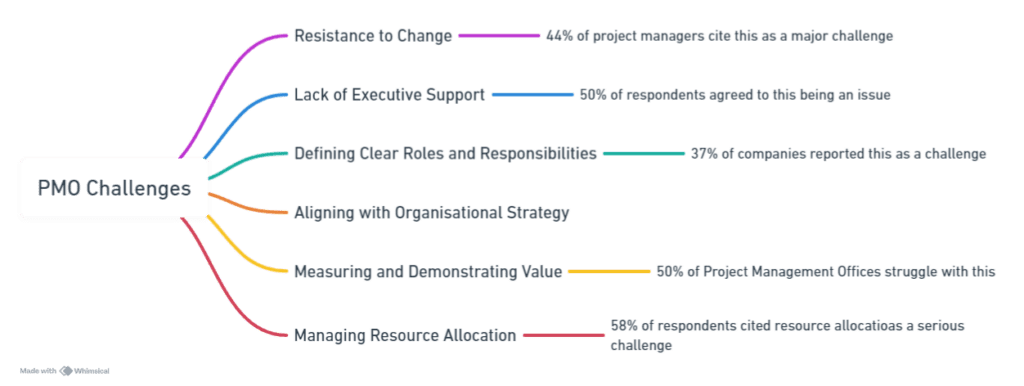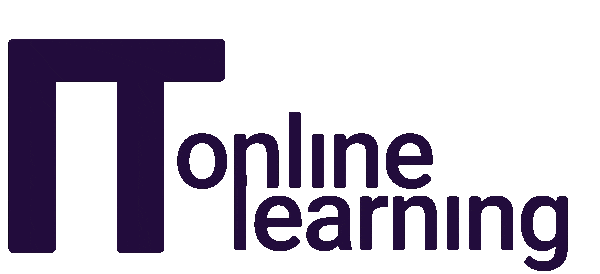Picture this: you are the CEO of a company that’s struggling to manage multiple projects effectively.
Despite having a team of skilled project management professionals, projects still get delayed, go over budget, and are not aligned with the company’s overall strategy.
You’ve heard about the Project Management Office (PMO) and wonder if this could be the solution.
But as you start researching PMOs, you quickly realise that “a one-size-fits-all approach” does not exist.
Different companies have different needs, and what works for one company might not work for another. That is where understanding the various PMO structures comes into play.
A PMO acts as the central hub for managing projects and providing guidance, standardisation, and support to project teams. However, how a PMO is structured impacts its effectiveness and the overall success of an organisation’s projects.
In this article, we’ll explore the different types of PMO structures and help you understand when to use one over another.
PMO Structures: Why Do They Matter?
Before we discuss the types of PMO structures, let’s consider why they matter.
A well-designed PMO structure improves the way companies manage and deliver projects. They impact project delivery, improve resource allocation, and increase overall organisational efficiency.
It provides a framework for project management practices bringing a level of consistency across projects.
A clear PMO structure in place benefits organizations by streamlining project management processes and achieving desired outcomes.
PMO Structures: Understanding the types and how they work
Functional PMO Structure
The functional PMO structure is like a project management headquarters separate from project teams.
Its main job is to help and guide projects by creating and using project management methods, rules, and best practices.
In this setup, the project management team acts as a knowledge hub – they possess the project management knowledge and share it across the organisation with project managers and teams to help projects succeed.
For example, imagine a software development company. Their PMO would decide how projects should be managed, such as using Agile or Waterfall methods, and ensure rules are followed.
Part of their role will also involve providing project managers with training and assistance so they can do their jobs well.
Projectized PMO Structure

In the projectized structure, the PMO is decentralized and embedded within project teams or departments.
Project managers report directly to the PMO.
This setup allows for more independence and flexibility in project management because project teams can directly access the resources and support provided by the project management office.
Making it practical: A construction company is an example of a projectized PMO structure. In this case, each construction project has its dedicated project team, including a project manager and relevant support staff.
The project manager reports to the PMO, which provides project management expertise, tools, and templates – all to increase the chances that projects succeed as intended.
Matrix PMO Structure
The matrix PMO structure is a mix of functional and projectized structures.
It’s like a blend of two different ways of organizing things.
In this structure, project managers have two bosses: the PMO and their functional manager.
The PMO is responsible for projects staying on track and meeting company goals.
The functional manager is responsible for the project team’s everyday work, such as assigning tasks and solving technical problems.
Using a manufacturing company as an example, the project management office ensures the smooth and efficient running of projects, while functional managers handle daily tasks related to teams and other technical issues.
Implementing a PMO Structure in Organisations: What To Consider
Several factors need to be carefully considered when implementing a PMO structure in a company. Failing to do so can have major consequences for the project management office’s effectiveness and success.
| Key Factors | Description | Consequences of Neglect |
|---|---|---|
| Clearly Defined Objectives. | Clearly define the objectives of the PMO, aligning them with a company’s strategic goals. | A lack of governance structure creates unwanted confusion, conflicts, and delays in decision-making, impacting project execution and overall performance. |
| Organisational Culture. | Assess the company’s existing culture and determine how the PMO will fit within it. | Failure to consider the culture can result in resistance to change, lack of collaboration, and difficulty in integrating the office into existing processes. |
| Stakeholder Engagement. | Identify key stakeholders and engage them early in the PMO implementation process. | Neglecting stakeholder engagement creates problems like resistance, lack of buy-in, and limited support for the PMO – limiting its effectiveness. |
| Resource Allocation. | Determine the necessary resources, such as budget, staff, and technology, required to support the PMO. | Inadequate resource allocation can limit the PMO’s ability to deliver its services, causing delays, inefficiencies, and compromised project outcomes. |
| Governance Structure. | Establish a clear governance structure that defines roles, responsibilities, and decision-making authority within the PMO. | Poor communication can result in misunderstandings, lack of alignment, and reduced collaboration, all of which affect project outcomes. |
| Change Management. | Develop a robust change management plan to address the impact of the PMO on the organisation and its employees. | Neglecting change management can lead to resistance, low adoption rates, and overall disruption to business operations. |
| Communication Strategy. | Develop a comprehensive communication strategy to ensure effective and transparent communication within the PMO and across the company. | Poor communication can result in misunderstandings, lack of alignment, reduced collaboration, all of which affect project outcomes. |
| Performance Metrics. | Define key performance metrics to measure the success and effectiveness of the PMO. | Without clear metrics, evaluating the PMO’s impact becomes challenging; identifying areas of improvement and demonstrating its value to the organisation becomes difficult. |
| Training and Development. | Provide training and development opportunities for staff and project managers to enhance their skills and knowledge. | Neglecting training can limit the PMO’s ability to deliver high-quality services, resulting in poor project outcomes. |
| Continuous Improvement. | Foster a culture of continuous improvement within the PMO. Encourage feedback, lessons learned, and process refinement. | Without a focus on continuous improvement, the PMO may stagnate, miss opportunities for growth, and fail to adapt to changing business needs. |
Project Management Methodologies: How do they align with PMO Structures?
When establishing a PMO structure, consider alignment with specific project management methodologies.
It often turns out that different PMO structures may be suitable for specific project management methodologies. For example:
- The functional PMO structure is well-aligned with a Waterfall project management methodology, which follows a sequential and linear approach to project execution.
- The projectized PMO structure is often associated with Agile project management methodologies, emphasising flexibility, collaboration, and iterative development.
- The matrix PMO structure can be used with various project management methodologies, depending on a company’s needs and project characteristics.
Aligning the project management office structure with the appropriate project management methodology can optimise project delivery and resource allocation.
The PMO Hierarchy: Who Does What?

In a PMO structure, it’s important to define the roles and responsibilities of different stakeholders. Here is a breakdown of the typical PMO hierarchy:
- PMO Head: The PMO head is responsible for overall PMO governance, strategy, and decision-making. They ensure that the PMO aligns with the organization’s goals and objectives.
- Project Managers: Project managers are responsible for successfully delivering individual projects. They work closely with project teams, stakeholders, and the PMO to plan, execute, and monitor projects.
- PMO Staff: PMO staff members support project managers and project teams. They may be responsible for developing and implementing project management methodologies, providing training and support, and ensuring compliance with project management standards.
- Functional Managers: In a matrix PMO structure, functional managers are important for resource allocation and technical expertise. They oversee the day-to-day operations of project teams and ensure that resources are allocated appropriately.
Challenges in Establishing a PMO Structure
While implementing a project management office structure is beneficial, there are potential challenges to be aware of. Some common challenges include:

Project Management Qualifications: Are You Interested?
We see that you are interested in the topic of the project management office.
Would you also like to explore project management courses and qualifications for career advancement and professional development?
Accredited by: APMG International, PeopleCert, Axelos and APM.
Finding the Best Fit
Choosing a PMO structure that’s right for you, your team and your organisation is crucial to the success of your project management efforts.
By understanding the different types of PMO structures (covered above) and considering key factors such as:
- Business needs
- Project management methodologies
- Stakeholder engagement
Remember, a well-designed project management office structure:
- Enhances project delivery
- Improves resource allocation
- Increases overall efficiency
We recommend evaluating your options carefully and choosing the best PMO structure that fits your organisation and project management needs.




